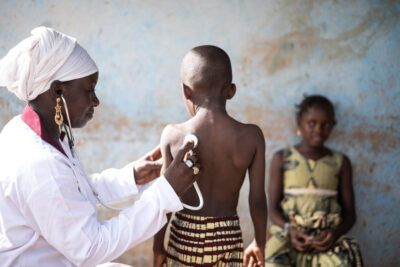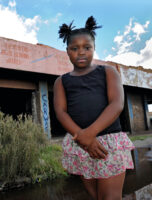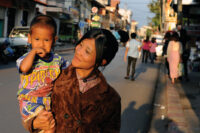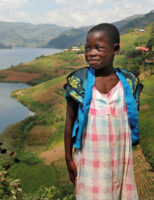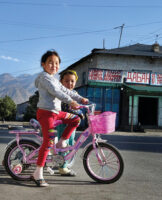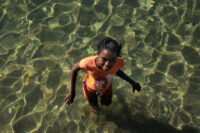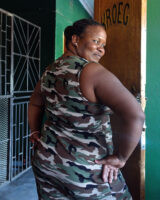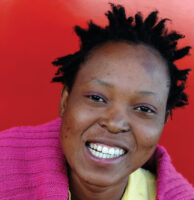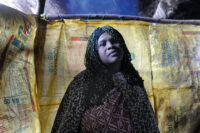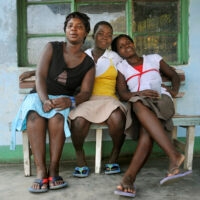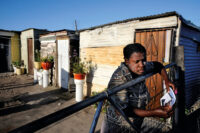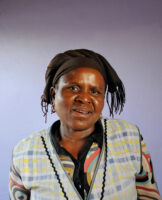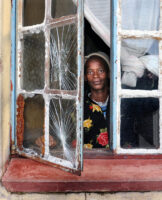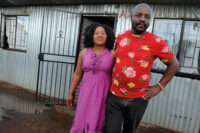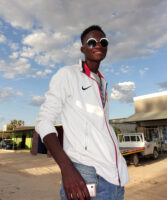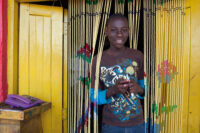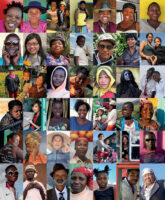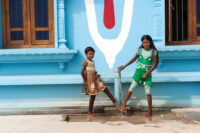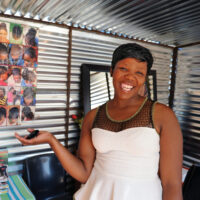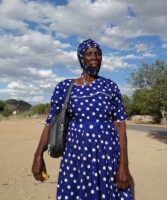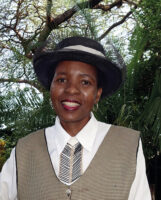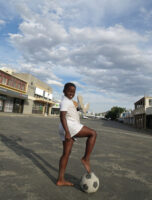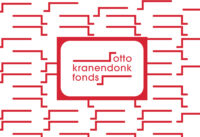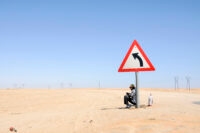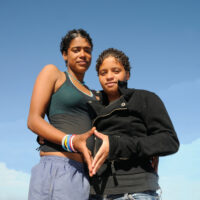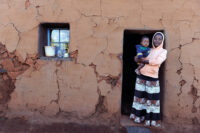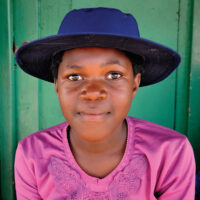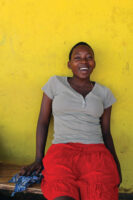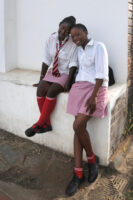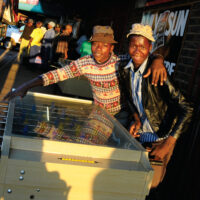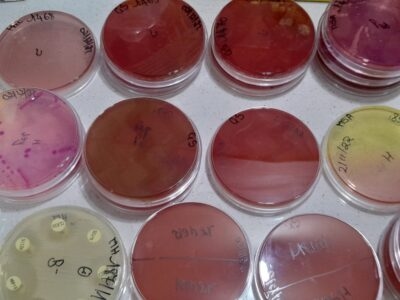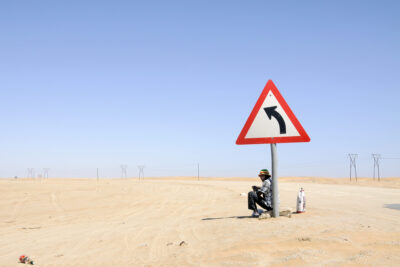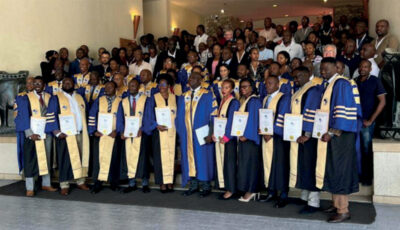Main content
Children with low vision often do not receive appropriate clinical low vision interventions because eye care staff do not know how to improve (the use of) their limited vision or regard them as blind. Low vision is functionally defined as ‘having irreversible visual loss that seriously reduces the ability to do many daily activities’. If a person has any useful vision, they should be considered low vision, and not blind. This is an important distinction to ensure that any remaining vision is used as much as possible and people are not unnecessarily labelled as ‘blind’. This is especially important when assisting children. Up to this day, children in many low-income countries are being taught Braille, regardless of their vision level, when attending special schools or resource centres/annexes attached to mainstream schools, partly because they are labelled ‘blind’. When you are faced with a person whose vision cannot be improved to normal levels and thus is low vision (formally defined as: visual acuity does not improve beyond 6/18), it is important to first check that everything possible has been done to improve their vision medically.
- Has their diagnosis (and prognosis for vision) been confirmed by an ophthalmologist or other eye care worker?
- Has all the medical and surgical treatment possible already been given? If not, these activities need to be organized first.
Help for low vision
Subsequently the following needs to be done to assist someone with low vision:
- Listing vision related problems and needs: what does the person need and would like to do again, that he or she cannot do anymore because of poor vision.
- Refraction: It is important to check if they have recently been refracted and got correct distance or presbyopic spectacles, and are they wearing them? It is recommended to refract again. Measuring near vision, without and with full correction (elderly people need to wear their presbyopic correction). You might find for example that the near vision level of a child is good enough to read the print schoolbooks in primary school with new distance spectacles. Alternatively they might need simple magnification, such as a pair of ‘magnifying’ glasses (high + spectacles) of, for example, + 4.0 Dioptres to read print of the required size. Deciding on all interventions: prescription of new distance spectacles, non- optical interventions (such as light), magnifying devices.
- Obtaining and payment of spectacles and low vision devices. A simple prescription does not guarantee a child or adult will obtain the spectacles and will use them.
- Organizing follow-up for further training and support at school, or at a rehabilitation programme; for example training in the use of devices and in mobility.
- Organizing annual follow-up, especially for children: they might need new distance spectacles and the ability to read smaller print sizes in higher grades. One ‘easy’ way to find children with low vision is to visit schools where children with disabilities are known to be enrolled. The first thing to do is ensure that all children with visual problems in these educational facilities receive a thorough eye examination and refraction.
What kind of help
How especially children with low vision can be helped is illustrated by the following examples. Vision assessment of 222 children with possible low vision (not amenable to further surgery and treatment) enrolled in 12 resource centres in Tanzania showed the following main causes of low vision (unpublished data): 36% Retina-related, of these 78% had albinism 23% Lens-related, of these 48% had pseudophakia. The majority is likely to benefit from refraction (and new distance corrections), especially the many children with albinism. (fig. 1) Their vision-related performance will also benefit from simple interventions such as caps, umbrellas, sunglasses and their health will benefit from clothing covering arms, legs and neck. Children with aphakia and pseudophakia often benefit, in addition to distance spectacles and an optical device for near activities such as reading, from good light on their reading and writing tasks. Most important: children operated for cataract need annual follow-up. Vision assessment of 663 school children in Nepal (unpublished data) attending different types of educational services (including local schools) showed that refractive errors were the main cause of low vision (29%), followed by lens related conditions (22%).

Results of refraction
Refraction improved distance visual acuities substantially (of course only if the children also obtained the required spectacles!): Before refraction, 66% of children had (very) poor vision (<6/60), after a thorough refraction, only 35% remained in this category. Many of the 65% with a visual acuity of 6/60 – 6/18 (after refraction) could now use their improved vision for reading the blackboard (seated in the front row) and almost all of these children could now access print. These potential vision improvements, as a result of a good refraction were also observed in children in other Asian countries [1]. The near vision of these children improved by distance glasses (the most common intervention!), non-optical interventions and/or magnifying devices: 82% reached small to large size print levels (was 62% before interventions). Only 7% still had very poor near vision after eye care assessment and interventions- Many children learned to use Braille unnecessarily, regardless of their vision level, and after assessment have enough vision and motivation to learn print.
Other measures
Non-optical measures are rarely understood or used as health/eye care staff might think these interventions are not ‘medical’. The most common non-optical interventions that are very helpful for people with low vision of all ages relate to: Illumination: use of window light or of a reading lamp at work, reducing glare by wearing a cap. Contrast and Colour improvement. Distance: by reading at a closer distance. Size: by simply writing a bit larger. Posture: by using a reading or writing stand to avoid bending over and blocking the light. Optical low vision devices that are available in many locations include low power hand magnifiers and high+ spectacles (+2.0 to at least + 10.0 D lenses in a frame). In addition any optical low vision devices can be ordered for a reasonable price from the low vision resource centre at the Hong Kong Society for the Blind. If available, referral to a large eye hospital, at tertiary level, with a low vision service should be considered.
Last but not least, all interventions need to be part of the advice given at the end of an assessment. It is important to realize that parents and teachers in general receive little/no information about low vision and the importance of use of vision. Simple explanations will improve compliance and motivation to (facilitate) use of (improved) vision. Implementing these relatively simple measures can improve the vision and thus the quality of life of many children with low vision.
References
- Karin van Dijk, Clare Gilbert. “Refractive Errors among Children Attending Low Vision Programmes in India, Nepal and Indonesia”. IAPB News. December 2006.
- General references: Low vision: we can all do more. Community Eye Health Journal 2012;25(77). (http://www.cehjournal.org/)
- Low Vision Care: The Need to Maximise Visual Potential. Community Eye Health 2004;17(49). (http://www.cehjournal.org/)
- Low vision devices from the Hong Kong Society for the Blind: http://www.hksb.org.hk

